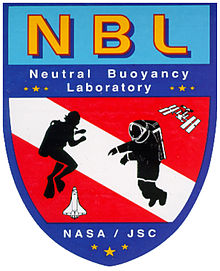 | |
 An astronaut training in the NBL | |
| Established | April 1995 [1] |
|---|---|
| Location | Houston, Texas, United States |
Operating agency | NASA |
| Website | www |
The Neutral Buoyancy Laboratory (NBL) is an astronaut training facility and neutral buoyancy pool operated by NASA and located at the Sonny Carter Training Facility, near the Johnson Space Center in Houston, Texas. [2] The NBL's main feature is a large indoor pool of water, [3] in which astronauts may perform simulated EVA tasks in preparation for upcoming missions. Trainees wear suits designed to provide neutral buoyancy to simulate the microgravity that astronauts experience during spaceflight.



